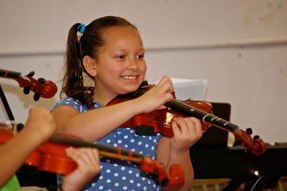
“When I practice with all of my friends, it makes me really happy and it makes me feel like I just want to play more and see more and learn more.”
– Ryleigh, a Newport String Project violin student
This quote from our student Ryleigh illustrates beautifully what participating in the Newport String Project means in her life – the joy and wellbeing that comes from musical togetherness and how learning new things inspires more curiosity.
Ryleigh’s observation also reveals a sense of momentum and wanting to build on things that are going well – more and more and more… We can all relate to having growth experiences where the world suddenly seemed a little bigger or being struck by a moment of insight that brought new horizons into view. It is a theme that is especially relevant to the Newport String Project in its third season.
The Newport String Project has now grown to include three class groups of students (ages 5-11) who participate in our after-school programming at the Dr Martin Luther King Community Center. With each new group, there is new energy and a new set of complexities to navigate. It’s a time when we are doing all we can to establish cultural norms for the program – a supportive and joyful atmosphere, a family-centered approach, strong discipline around attendance etc. And of course, we are also seeing cultural patterns take hold all by themselves – younger siblings aspiring to learn everything their older siblings can do. The older siblings teaching the younger ones the tricks they have picked up, but also motivated to stay “ahead of the game.” We are fortunate to enjoy a focused presence at the MLK Center in the heart of Newport – a space that allows us to learn about and engage with the community in a very meaningful way.
With each season, the concert series is a process of discovery. From string quartets at the Quaker Meeting House to barndances to chamber music for strings and percussion at the local coffee shop, we dig into this question of how live musicmaking can transform community spaces, maybe even create a moment of surprise or playfulness in someone’s day. The connections we make with audiences at our concerts are a great source of inspiration and feedback as we think about programming. It has been encouraging to see how the performer-audience relationship become more dynamic since our first season. It is an exciting time of experimentation with new venues, as well as enjoying the rituals of venues where we play regularly.
Community MusicWorks’ focus on model sharing has created a vital opportunity for many professional musicians “to play more and see more and learn more.” As Emmy and I progress further in the life of the Newport String Project, we are constantly learning about what works (and what doesn’t) and this is accompanied by a sense of expanding possibility. What might we accomplish if we could add an administrative staff member to our team? What if we could grow our community of volunteers? What if we could have a string quartet of resident musicians – how might that change the experience of living and growing up in Newport? Potential gives us a smile and a wave from the distance!
Year three of the project means that things are no longer brand new, a lot has been achieved and yet these are still very early days. We spend a lot of time living in that hectic space in between “what went well today?” and “what’s next?” – often exciting and rewarding, but sometimes not a comfortable place to be. As with any learning experience, new more challenging questions come up. Dreaming big needs to be tempered by understanding what is sustainable. We share in what I think is a familiar experience for a lot of our colleagues who are doing similar work. How to scaffold the growth of these organizations in a way that supports long-term investment by musicians, families and the community is a critical conversation for all of us. This is fundamentally optimistic long-range work connected to a big social purpose, requiring lots of support, advice and investment. Carving out spaces for students (and teaching artists) to create, innovate, practice their art, reflect – essentially, to thrive – is a bold task and one that needs attention to all the nuts-and-bolts details of resource development. Everyone – musicians, families, audiences, supporters – has a role to play in this conversation… Here’s to the next round of Big Questions!
–Ealaín McMullin, Director, Newport String Project
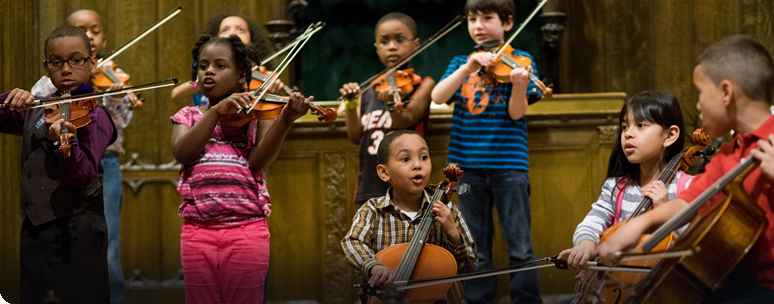
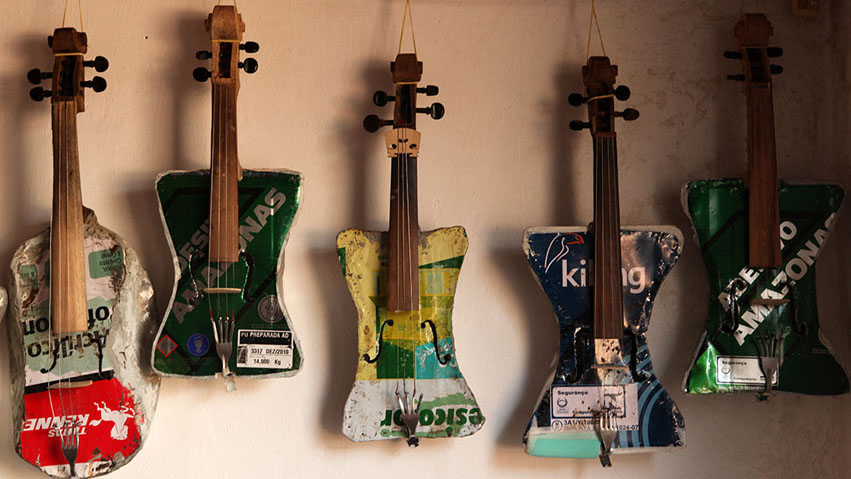
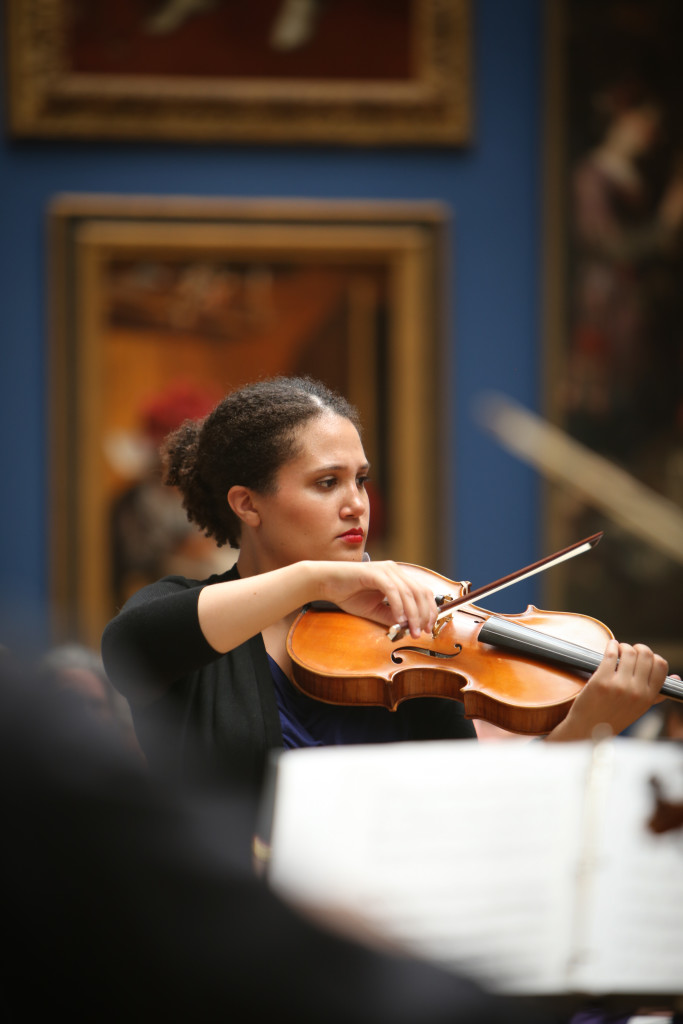

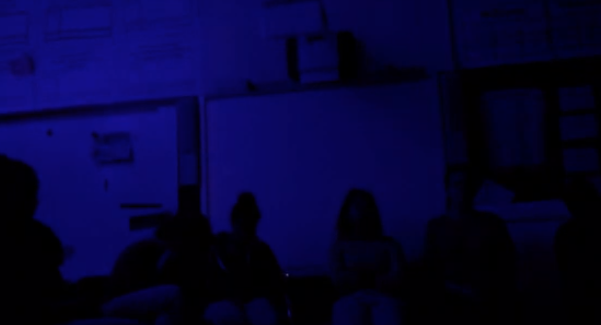 Phase II in sonic meditation
Phase II in sonic meditation